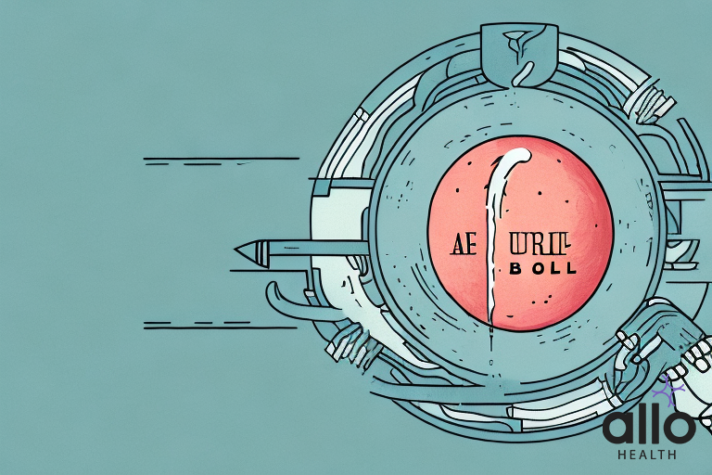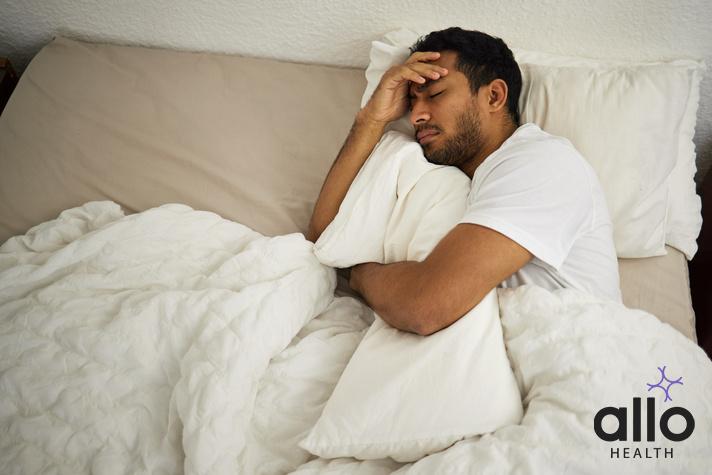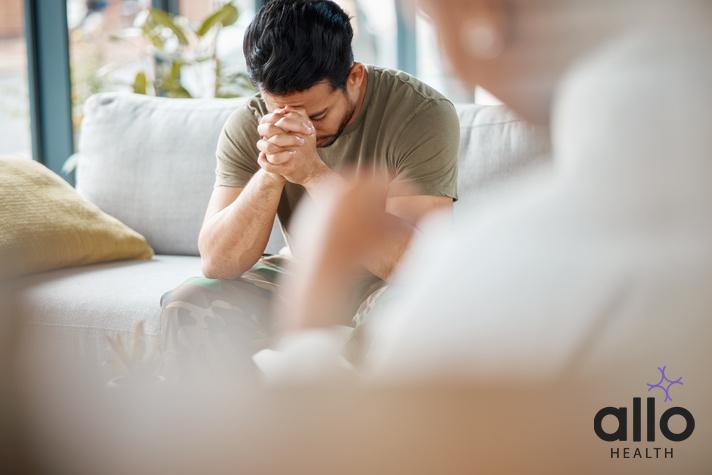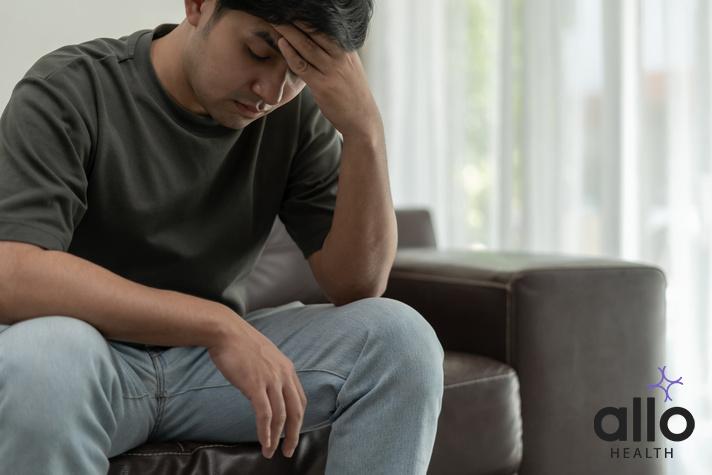Understanding Boil on Penis: Causes, Symptoms, Treatment, and Prevention

Allo Health is dedicated to personalized well-being, offering support and trusted information tailored to individual health goals. The platform emphasizes human-generated content, led by a distinguished medical team of experts, including physicians and sexual health specialists. Their commitment to credibility involves rigorous fact-checking, authoritative research, and continuous updates to ensure accurate, up-to-date information. Allo Health's unique approach goes beyond conventional platforms, providing expert-led insights and a continuous commitment to excellence, with user feedback playing a crucial role in shaping the platform's authoritative voice.

Dr Sanina Mansoor holds MBBS degree from Yenepoya university,Mangalore.She has 8 years of experience working as a medical officer at various health centres and medical colleges.
Why This Was Upated?
Our experts continually monitor the health and wellness space, and we update our articles when new information became available.
Updated on 13 March, 2024
- Article was updated as part of our commitment to diversity, equity, and inclusion.

"The following blog article provides general information and insights on various topics. However, it is important to note that the information presented is not intended as professional advice in any specific field or area. The content of this blog is for general educational and informational purposes only.
Book consultation
The content should not be interpreted as endorsement, recommendation, or guarantee of any product, service, or information mentioned. Readers are solely responsible for the decisions and actions they take based on the information provided in this blog. It is essential to exercise individual judgment, critical thinking, and personal responsibility when applying or implementing any information or suggestions discussed in the blog."
Boils, also known as furuncles, are painful and unsightly skin conditions that can develop anywhere on the body. While they commonly occur in areas like the armpits, buttocks, and neck, they can also manifest on the penis. Boils on the penis can be particularly distressing due to their sensitive location and the discomfort they cause. In this article, we will delve into the causes, symptoms, treatment options, and prevention of boils on the penis.
Understanding Boils or Lumps on the Penis
Boils on the penis are painful, inflamed, and pus-filled lumps that form on the skin of the penis shaft, head, or foreskin. Boils, also known as furuncles, are localized infections that usually develop around a hair follicle or sweat gland.
They can be caused by various factors, including bacteria, poor hygiene, friction, or ingrown hairs. Boils on the penis can be uncomfortable and concerning due to their sensitive location and the potential for pain and discomfort they bring.
These boils often start as a red, tender bump and may eventually fill with pus, creating a white or yellow center. If you suspect you have a boil on your penis, it’s important to seek medical advice for proper diagnosis and treatment.
Different Types of Boils or Lumps on Penis
There are various types of lumps or bumps that can develop on the penis, and they can vary in size, color, and characteristics. Some common types of lumps or bumps on the penis include:
- Pearly Penile Papules (PPP): PPP are small, flesh-colored or white bumps that typically appear in rows around the base of the glans (penis head). They are benign and not associated with any infections or diseases.
- Fordyce Spots: These are small, yellowish, white or pale-colored raised bumps that can appear on the penis and are often associated with sebaceous glands. They are harmless and do not require treatment.
- Pimples: Pimples on the penis are similar to acne and can occur when hair follicles or oil glands become clogged. They can be red, raised, and may contain pus.
- Genital Warts: Caused by certain strains of the human papilloma virus (HPV), genital warts are soft, flesh-colored growths that can appear on the penis. They are highly contagious and should be treated by a healthcare professional.
- Lipomas: Lipomas are benign fatty tumors that can occur anywhere on the body, including the penis. They are usually soft to the touch and can be moved under the skin.
- Cysts: Skin cysts can develop on the penis and appear as small, firm lumps beneath the skin. They are fluid-filled bumps and can be associated with hair follicles or sebaceous glands.
- Ingrown Hairs: Ingrown hairs can create small, painful, red bumps on the penis. These occur when hair curls back into the skin instead of growing outward.
- Infections and Abscesses: Boils, abscesses, or infected hair follicles can cause painful, pus-filled lumps on the penis. These may be associated with bacterial or other infections and should be treated by a healthcare provider.
- Folliculitis: Folliculitis can cause red, pimple-like bumps on the hair follicles of the penis. It is often caused by bacterial infection.
- Lymphocele: Lymphoceles are small, painless, fluid-filled sacs that can develop on the penis after trauma, injury, or surgery. They typically resolve on their own and may not require medical intervention.
- Tyson Glands: Tyson glands are sebaceous glands located under the foreskin of uncircumcised males. They may appear as small, raised, and sometimes pimple-like bumps. Tyson glands are a normal part of the anatomy and are not a cause for concern.
- Angiokeratomas: Angiokeratomas are benign skin growths that often appear as dark, raised lesions. They may be mistaken for lumps. While they are generally harmless, a healthcare provider can evaluate them to confirm the diagnosis.
- Moles: Moles, or nevi, are common on the skin and can develop on the penis as well. Most moles are harmless, but any changes in size, shape, or color should be examined by a healthcare professional, as this can indicate a need for further evaluation.
If you notice any unusual lumps or bumps on your penis, it is crucial to seek medical advice for an accurate diagnosis and appropriate treatment. Some lumps may be benign, while others may require medical intervention, especially if they are associated with infections, sexually transmitted diseases, or potential malignancies. Early diagnosis and treatment are essential for your overall health and well-being.

Causes of Boils or Lumps on Penis
Boils or lumps on the penis can have various causes, including the conditions you’ve mentioned:
- Peyronie’s Disease: Peyronie’s disease is a condition characterized by the development of fibrous plaques in the penile shaft. These plaques can cause penis curvature and may sometimes be felt as lumps or hard areas.
- Lichen Planus: Lichen planus is a skin condition that can affect the penis, leading to the formation of raised, reddish-purple bumps, often with white lines or streaks. It can be itchy or painful and typically requires medical evaluation and treatment.
- Genital Herpes: Genital herpes, caused by herpes simplex virus, is a viral infection that causes painful sores, painful blisters, rashes and ulcers on the genitals, including the penis. It is a sexually transmitted infection (STI) and requires medical evaluation and antiviral treatment.
- Syphilis: Syphilis is another STI that can lead to the development of sores, lumps, or ulcers on the penis during its secondary stage. Syphilis is a serious infection and must be treated with antibiotics.
- Molluscum Contagiosum: Molluscum contagiosum is a viral skin infection that results in small, flesh-colored bumps with a central dimple. These bumps are contagious and often require treatment.
- Scabies: Scabies is a parasitic infestation caused by the mite Sarcoptes scabiei. It can lead to itchy, raised red bumps and small burrows in the skin. Scabies requires medical treatment.
- Penile Cancer: Penis cancer is a rare type of cancer but serious condition that can lead to the formation of lumps, growths, or sores on the penis. Suspicious growths should be promptly evaluated by a healthcare provider for diagnosis and treatment.
- Bacterial Infection: The most common cause of boils on the penis is a bacterial infection, often attributed to Staphylococcus aureus. These bacteria can enter the skin through minor cuts or hair follicles, leading to infection and boil formation.
- Poor Hygiene: Inadequate personal hygiene in the genital area can create an environment conducive to bacterial growth and boil development. Proper cleaning and hygiene can help prevent this.
- Friction and Irritation: Friction from clothing, sexual contact, or even shaving can cause skin irritation and minor cuts, making the penis more vulnerable to infection and the subsequent formation of boils.
These factors, individually or in combination, can lead to the development of boils on the penis, which can be uncomfortable and painful. If you suspect you have a boil on your penis, seeking medical attention is advisable for proper diagnosis and treatment.
It’s important to remember that not all lumps or bumps on the penis are harmful or require immediate medical attention. However, if you notice any unusual or concerning lumps, especially if they are painful, persistent, or associated with other symptoms, it’s advisable to consult a healthcare provider for a proper diagnosis and guidance on the appropriate course of action. Early evaluation is vital for addressing potential health issues effectively.
Symptoms of Boils or Lumps on the Penis
Boils or lumps on the penis can manifest with various symptoms, which may include:
- Visible Bumps or Lumps: You may notice the presence of raised, abnormal growths on the penis. These can vary in size, shape, and color.
- Pain or Discomfort: Boils or lumps may be painful, causing discomfort, tenderness, or aching in the affected area.
- Redness and Swelling: The skin around the lump or boil can become red and inflamed. Swelling may be present, making the area appear larger than usual.
- Pus or Discharge: Boils often contain pus, which may be visible as a white or yellow center. In some cases, a lump may ooze fluid or discharge.
- Itching or Irritation: You may experience itching or irritation in the vicinity of the lump or bump, which can be bothersome.
- Changes in Skin Texture: The skin over or around the lump may feel different in texture compared to the surrounding area. It may be rough, scaly, or raised.
- Painful Sores or Ulcers: In cases of certain infections, you may develop painful sores, ulcers, or open lesions on the penis.
- Changes in Erection or Penile Shape: For some conditions like Peyronie’s disease, lumps can lead to a curvature of the penis or changes in erection quality.
- Systemic Symptoms: In more severe cases, where infections have spread, you might experience systemic symptoms such as fever, fatigue, or enlarged lymph nodes.
It’s important to note that the specific symptoms can vary based on the underlying cause of the lump or bump. If you notice any unusual or concerning symptoms on your penis, especially if they persist, change, or cause pain, it’s advisable to seek medical evaluation for an accurate diagnosis and appropriate treatment. Early intervention can help address potential health issues effectively.

Treatment of Boils or Lumps on the Penis
The treatment of boils or lumps on the penis depends on the underlying cause and the severity of the condition. Here are general guidelines for the treatment of these issues:
- Seek Medical Evaluation: If you notice a boil, lump, or any concerning changes on your penis, it’s essential to consult a healthcare provider for a proper diagnosis. The doctor will assess the condition and determine the most appropriate treatment plan.
- Bacterial Infections and Boils: If a boil is caused by a bacterial infection, treatment may involve antibiotics to clear the infection. In some cases, a healthcare provider may need to drain the boil to remove pus and promote healing.
- Viral Infections: Conditions such as genital herpes, syphilis, or molluscum contagiosum, which can cause sores, blisters, or bumps on the penis, may require antiviral medications or other treatments. These should be prescribed by a healthcare professional.
- Benign Conditions: Some lumps or bumps, such as Fordyce spots or Tyson glands, are benign and do not require treatment. However, if you have concerns about their appearance or discomfort, discuss your options with a doctor.
- Cysts: Cysts on the penis may need to be drained if they become painful or infected. In some cases, surgical removal might be recommended.
- Peyronie’s Disease: Treatment for Peyronie’s disease, which causes fibrous plaques and curvature of the penis, may involve medication, therapy, or surgery. A urologist can provide guidance on the most suitable approach.
- Skin Cancer: If you suspect a lump on the penis is related to skin cancer, it is crucial to consult a healthcare provider promptly for a biopsy and treatment plan.
- STIs: Sexually transmitted infections (STIs) such as syphilis or genital herpes require specific treatments, often involving antibiotics or antiviral medications. Proper management and partner notification are essential.
- Hygiene and Preventive Measures: In some cases, improving personal hygiene, using proper shaving techniques, and avoiding irritants may help prevent the recurrence of lumps or bumps on the penis.
- Regular Check-ups: For those with chronic health conditions or a history of penile issues, regular check-ups with a healthcare provider can help monitor and address any concerns promptly.
It’s essential to remember that self-diagnosis and self-treatment are not advisable when dealing with penile issues. Seeking professional medical advice and following their guidance is the best approach to ensure proper diagnosis and effective treatment, as well as to address any concerns or discomfort related to the penis
Preventing Boils or Lumps on the Penis
Preventing boils on the penis involves maintaining good hygiene and taking precautions to reduce the risk of infection. Here are some key steps to prevent boils on the penis:
- Regular Cleaning: Ensure you clean the genital area regularly as part of your daily hygiene routine. Use a mild, unscented soap and warm water to wash the penis and surrounding area. Thorough cleaning helps remove sweat, bacteria, and dead skin cells that can contribute to infection.
- Avoid Tight Clothing: Wear loose-fitting underwear made from breathable materials like cotton. Avoid tight or restrictive clothing, as this can create friction and lead to irritation.
- Shave Carefully: If you choose to shave your genital area, do so with care to minimize the risk of ingrown hairs. Use a sharp, clean razor, and apply a moisturizing shaving cream or gel. Shave in the direction of hair growth to reduce the likelihood of ingrown hairs.
- Safe Sexual Practices: Engage in safe sexual practices to reduce the risk of sexually transmitted infections (STIs) that can lead to boils or other genital issues. Use protection and practice good sexual hygiene.
- Avoid Sharing Personal Items: Do not share personal items like towels, razors, or undergarments with others. Sharing such items can lead to the spread of bacteria, increasing the risk of infection.
- Control Chronic Conditions: If you have underlying health conditions such as diabetes that may increase your susceptibility to boils, work with your healthcare provider to manage these conditions effectively.
- Seek Medical Advice: If you notice any unusual symptoms, skin changes, or persistent discomfort on your penis, consult a healthcare professional for a proper diagnosis and guidance on prevention.
By following these preventive measures, you can reduce the likelihood of developing boils on the penis and maintain optimal genital health. Good hygiene and responsible self-care play a significant role in preventing such skin issues.

When to see a doctor
Knowing when to see a doctor is essential when dealing with health concerns, including those related to the penis. Here are some situations in which it’s advisable to seek medical attention:
- Unexplained Lumps or Bumps: If you discover abnormal lumps or bumps on the penis or skin folds, especially if they are painful, persist, change in size, shape, or color, or are associated with other symptoms, consult a healthcare provider for an evaluation.
- Painful Sores or Ulcers: Painful sores, ulcers, or lesions on the penis may be indicative of conditions like genital herpes, syphilis, or other infections. Seeking medical attention is crucial for diagnosis and treatment.
- Changes in Moles or Skin Growth: If you notice changes in the appearance, color, size, or texture of moles or other skin growths on the penis, it’s important to have them evaluated by a healthcare professional, as this could indicate a need for further assessment.
- Sexually Transmitted Infections (STIs): If you suspect you have been exposed to an STI or experience symptoms such as discharge, burning, itching, or unusual growths on the genital area, seek testing and treatment from a healthcare provider.
- Persistent Symptoms: Persistent symptoms such as pain, discomfort, itching, or unusual sensations in the genital area that do not resolve on their own should be discussed with a doctor.
- Difficulty with Erection: If you experience difficulty achieving or maintaining an erection or notice a change in the curvature of the penis, a condition like Peyronie’s disease may be the cause, and a healthcare provider can provide guidance.
- Concerns about Penile Health: If you have concerns about penile health, function, or sexual well-being, don’t hesitate to consult a healthcare professional who can address your questions and provide guidance.
- General Health Concerns: Sometimes, penile issues can be associated with underlying health conditions. If you have chronic conditions like diabetes or circulation problems, and you notice changes in your genital area, discussing these concerns with a doctor is important.
Remember that early evaluation and diagnosis by a healthcare provider are essential for addressing potential health issues effectively. Whether you have specific symptoms or are concerned about your penile health, consulting a doctor is the best way to ensure proper care and peace of mind.
Frequently Asked Questions
- What are the common causes of boils or lumps on the penis?
Boils or lumps on the penis can be caused by various factors, including bacterial infections, ingrown hairs, friction, skin conditions, or even sexually transmitted infections. Identifying the underlying cause is essential for appropriate treatment.
- How can I differentiate between a harmless condition and a more serious issue?
It can be challenging to distinguish between benign conditions like Fordyce spots and potentially more serious concerns. If you have doubts or experience symptoms like pain, persistent growth, or changes in appearance, consult a healthcare provider for a proper evaluation.
- What should I do if I notice a lump on my penis?
If you notice an unusual lump or bump on your penis, the best course of action is to seek medical advice. It’s important not to attempt self-diagnosis or self-treatment. A healthcare professional can assess the lump, perform any necessary tests, and recommend appropriate treatment or monitoring.
- Are lumps on the penis always a sign of an infection or disease?
No, not all lumps on the penis are a sign of infection or disease. Some, like Fordyce spots or Tyson glands, are entirely normal variations. However, it’s crucial to have any new or changing lumps or bumps evaluated to rule out potential health issues.
- Are there preventive measures to reduce the risk of developing boils or lumps on the penis?
Maintaining good genital hygiene, practicing safe sexual behavior, avoiding irritants, and using proper shaving techniques can help reduce the risk of developing certain conditions. However, prevention strategies may vary depending on the specific cause of the lumps or boils, so it’s advisable to consult a healthcare professional for personalized guidance.






































